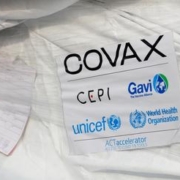World hunger rising as U.N. agencies warn of “looming catastrophe”
World hunger rising as U.N. agencies warn of “looming catastrophe”
10:06 AM EDT
By Maytaal Angel
LONDON, July 6 (Reuters) – World hunger levels rose again last year after soaring in 2020 due to the COVID-19 pandemic, with the Ukraine war and climate change threatening starvation and mass migration on an “unprecedented scale” this year, according to U.N. agencies.
Up to 828 million people, or nearly 10% of the world’s population, were affected by hunger last year, 46 million more than in 2020 and 150 million more than in 2019, agencies including the Food and Agriculture Organization, World Food Program, and World Health Organization said in the 2022 edition of the U.N. food security and nutrition report.

The World Food Program (WFP) Executive director David Beasley attends a news conference on the food security in Yemen at the United Nations in Geneva, Switzerland, December 4, 2018. REUTERS/Denis Balibouse/File Photo
World hunger levels remained relatively unchanged between 2015 and 2019.
“There is a real danger these numbers will climb even higher in the months ahead,” said WFP executive director David Beasley, adding price spikes in food, fuel and fertilizers stemming from the Russia-Ukraine war threaten to push countries into famine.
“The result will be global destabilization, starvation, and mass migration on an unprecedented scale. We have to act today to avert this looming catastrophe,” he added.
Russia and Ukraine are the world’s third and fourth largest grains exporters, respectively, while Russia is also a key fuel and fertiliser exporter.
The war has disrupted their exports, pushed world food prices to record levels and triggered protests in developing countries already contending with elevated food prices due to COVID-19 related supply chain disruptions.
The U.N. report released on Wednesday warned of “potentially sobering” implications for food security and nutrition as conflict, climate extremes, economic shocks and inequalities keep intensifying.
It estimated that globally in 2020, 22% of children under 5 were stunted while 6.7% or 45 million suffered from wasting, a deadly form of malnutrition that increases the risk of death by up to 12 times.
Calling for an overhaul of agricultural policies, the report said the global food and agriculture sector received almost $630 billion a year in support that often distorted market prices, did not reach small-scale farmers, hurt the environment and did not promote nutritious food production.
This support includes subsidies that mostly target calorie rich staple foods like cereals, sugar, meat and dairy at the expense of healthier, nutritious foods like fruits, vegetables, pulses and seeds.
“Every year, 11 million people die due to unhealthy diets. Rising food prices mean this will only get worse,” said WHO Director-General Tedros Adhanom Ghebreyesus.
“WHO supports countries’ efforts to improve food systems through taxing unhealthy foods, subsidizing healthy options, protecting children from harmful marketing, and ensuring clear nutrition labels,” he added.
Our Standards: The Thomson Reuters Trust Principles.
Source: Reuters


 Reuters
Reuters







